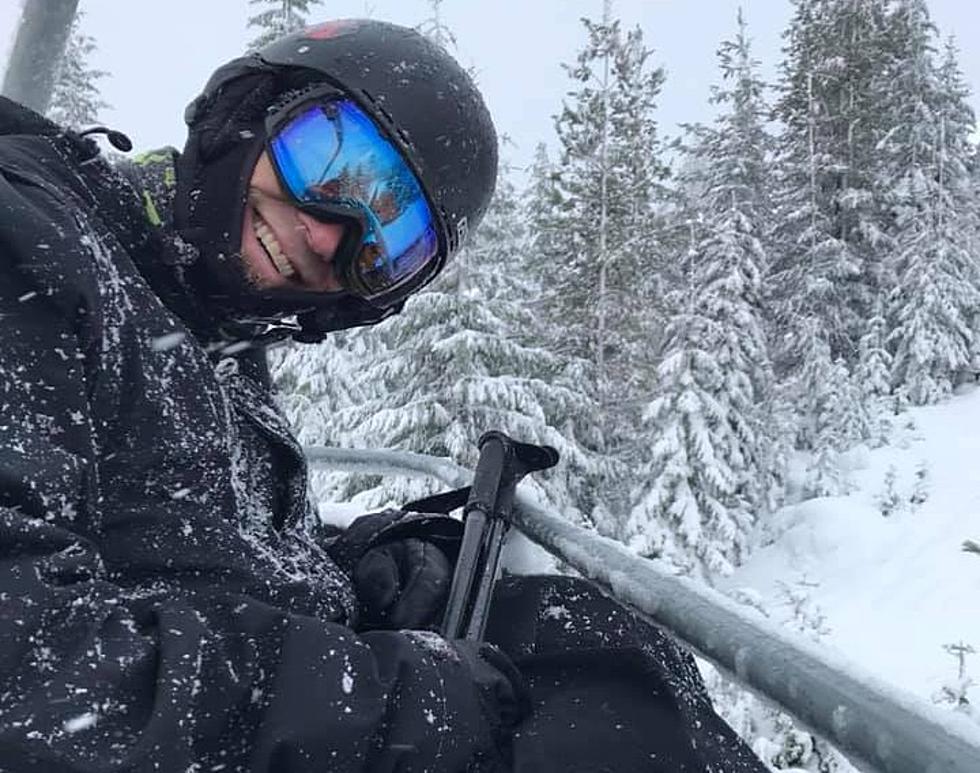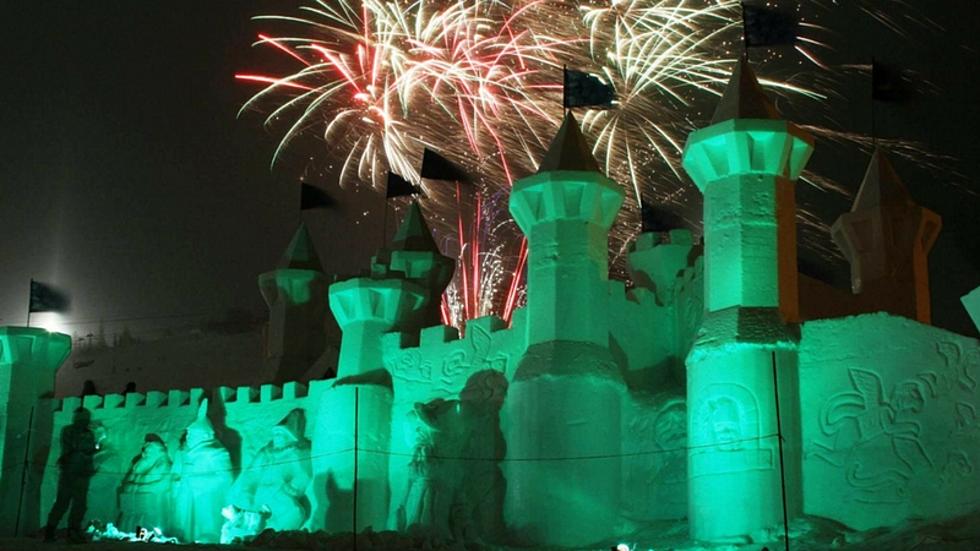
Skiers rediscover White Pass
Congrats to White Pass, the front page of the Seattle Times!
Jim Mowrey's face tells the whole story.
Standing at 6,500 feet, atop Paradise Basin, his goggles reflect a too-stunning-to-be-real image of the south face of Tahoma, a lenticular cloud doffing its cap over the summit. Below, a cheek-to-cheek grin gleams as bright as fresh snow in an open meadow.
"This really makes this place worth coming to," says Mowrey, 56, of Olympia, waving one ski pole across the 767 acres of new ski terrain at White Pass, the gem of a Cascades ski area that quietly doubled in size at the start of the winter sports season.
The expansion, tied up by legal challenges for three decades, offers some important lessons in the enduring balancing act between public access and preservation of treasured Northwest wilderness. But all of that must seem like old history to ebullient skiers and snowboarders reveling in the new terrain this winter.
Mowrey, a retired fitness instructor, is a season-pass holder at nearby Crystal Mountain, Washington's premier ski destination. It says something that a passionate skier with a $700 annual investment in Crystal would, on four or five occasions already this season, drive a half-hour farther to make turns at now not-so-small White Pass.
In this case, it's not just the size that matters. Quality, not quantity, is the big draw.
Skiers who ride the new Couloir Express detachable quad lift on a powder day will be greeted by a deliciously open basin — a shallow bowl with countless off-trail ski lines just steep enough to work up a sweat, but not so steep as to terrify.
It's an intermediate powder bowl — a rarity in local ski areas, and perfectly suited to White Pass' often-drier snow. And it offers some rare shots of lift-accessible tree skiing.
On nonpowder days, 10 new groomed runs lure skiers onto lovingly maintained corduroy snow. It'll be a snoozer to adrenaline junkies; a few black-diamond drops can be found, but this is mostly a cruiser's heaven.
The showstopper, of course, is the mountain. On a clear day, Mount Rainier looms on the horizon on nearly every new run, looking almost close enough to touch.
"It's just plain fun," Mowrey said. "Not scary. Just plain fun!"
That's likely to become the calling card for White Pass, previously known for A) its role in spawning the ski careers of Olympic medalists and local legends Phil and Steve Mahre, and B) the agonizingly long lift lines at the base area for the Great White lift, which used to be the cramped ski area's only four-seater lift, and its major choke-point.
Most skiers now ride Great White only to get to the new terrain along Hogback Ridge, sandwiched between White Pass Summit and the Goat Rocks Wilderness.
"It spreads people out," said Kevin McCarthy, the ski area's longtime general manager. "That's been the idea, all along."
"All along" in this case being truly long. As in, 33 years.
The project first was proposed in the late 1980s, after the 1984 Wilderness Act expanded the Goat Rocks Wilderness but left Hogback Ridge outside the borders. The intention was for White Pass to be able to expand, the federal government said. The U.S. Forest Service approved initial expansion plans after an extensive environmental review.
But, because the land backs up to a federal wilderness area and contained valued natural features, including a stretch of the famed Pacific Crest Trail (about one-half mile of which has been successfully rerouted), the project was appealed, litigated and — some would argue — nitpicked nearly to death. The opposition was led by a coalition including Sierra Club, a backcountry skiers' group and the Yakama nation.
The fight droned on, the project nearly fizzled.
At one point, the Forest Service pulled its approval for the project, putting it back to square one. In the end, three major environmental reviews were conducted; Dumpsters full of paperwork were produced; countless hours of court time were consumed.
You could argue — and many do — that the White Pass expansion, greenlighted in 2008 when a federal judge dismissed last-gasp appeals, is a shining example of environmental watchdogism run amok.
The Sierra Club remains strident about what the group calls an illegal incursion into land traditionally protected as wilderness. Local spokesman Mark Lawler last week called the expanded terrain "a major disaster."
"In spite of the presence of laws and regulations that protected the area, we basically encountered a federal judge who just didn't care," said Lawler, National Forests chairman for the club's Cascade Chapter. "The ski area was lined up with chain saws, and once the decision came down, they went in and cut the new ski runs."
McCarthy blames the interminable delays on opponents' seeming determination to kill, rather than shape, the project.
"It seemed like it was all or nothing for them," he said. "There was no compromise. So we said, fine. It took another 10 years, but in the end, we've got a product."
As is often the case, the subtext to this environmental debate was grayer than it might appear, says David Bahr, a Eugene attorney who represented the Hogback Preservation Association.
Political agendas and national issues are pulled into the mix in these cases. The White Pass expansion became a battlefield for legal skirmishes over hot-button issues, such as the Endangered Species Act, and later, the federal roadless-areas rule.
The Forest Service sought an exemption from that rule in the White Pass case that was so broad, it might have created a legal precedent that practically negated the rule itself, Bahr says.
The judge granted White Pass an exemption, but not under the sweeping terms the Forest Service sought. That principle and potential precedent was one worth fighting for, even if it meant more delays, says Bahr, a former Packwood, Lewis County, resident who learned to ski at White Pass.
The fight was worth the time and cost to make the project better, Bahr says.
"People will roll their eyes and say, 'Those damn environmentalists, all they do is delay, delay, delay!' But here, it did make a demonstrable reduction in impact [to the environment] than if those projects had gone through without challenge. In that sense, the process worked."
From the other side, Ranger Sue Ranger (her real name) of Okanogan-Wenatchee National Forest agrees that, in the end, the process worked. She laments the long history but is confident the general public was the winner.
The ski area flew all its heavy construction materials in by helicopter to avoid building roads. And the resort, Ranger says, took great care to selectively log and not do major regrading.
The result is noticeable. Paradise Basin's ski/snowboard lines are a departure from the old-style, clearcut-gutter style runs that characterize most Northwest ski runs.
Skiers cruising down runs such as "Tree Hugger" will be delighted to find a trail that repeatedly splits off between small islands of fir trees. Other natural terrain features — dips, small hills and the like — were left in place, not scraped away. It's possible to ski or ride the same run a half-dozen times and pick a different line each time.
The result: Skiing through White Pass' new $9 million winter playground feels more like skiing through the woods and across open meadows than following a snow-covered road.
It's truly a gem. Worth every day, perhaps, of those 33 years of paperwork. Which is easy to say for those of us who didn't have to file them.
White Pass, one of the few ski areas in the state with the added convenience of slopeside lodging, is twice as big now, but still feels intimate. It will not compete with the ski-destination status of Crystal, Mount Bachelor or even Mount Hood Meadows. That is by design.
What it will do is carve a niche as a haven for people willing to venture a little farther for a quiet retreat in a low-key place where snow and mountains — not fancy gondolas, overpriced pubs and overhyped nightlife — are the stars.
In that sense, in these parts, there's really nowhere else like it. The Seattletimes.com
More From 92.9 The Bull









